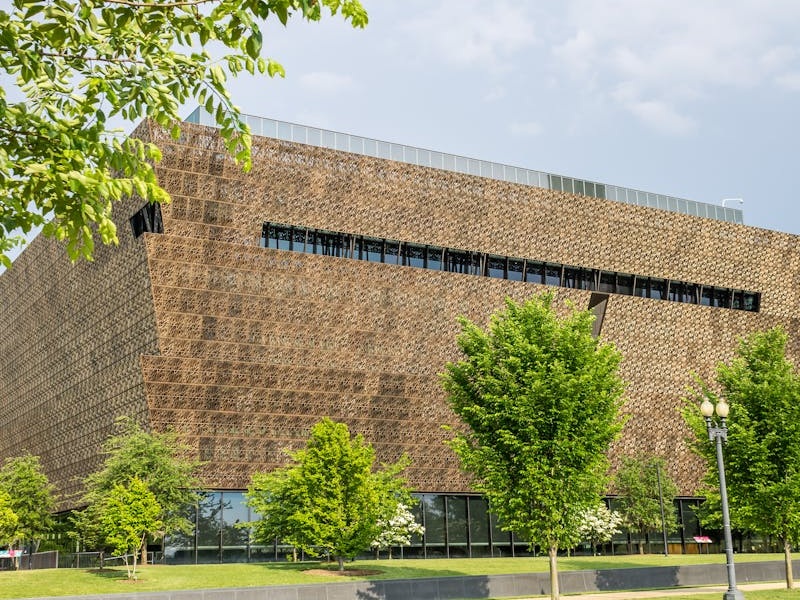Efforts to reshape African American history in the United States have intensified in 2025. Recent political actions challenge the integrity and independence of the Smithsonian Institution’s museums, particularly the National Museum of African American History and Culture (NMAAHC). As a key player in telling America’s public history, the Smithsonian faces a struggle over how the nation remembers and learns from its past. At stake is not just how we present facts about slavery, segregation, and civil rights, but also the understanding that Black history is a crucial part of American history.
Political Pressure and Claims of “Whitewashing”
In recent months, the Smithsonian, a respected network of museums and cultural institutions, has come under attack from the Trump administration. President Donald Trump, who has returned to power, has accused the Smithsonian—especially the NMAAHC—of focusing too much on the negative aspects of slavery. He insists that the museum exhibits should highlight American achievements and exceptionalism rather than the harsh realities of racial injustice. The White House has ordered a broad review of the Smithsonian’s exhibits, intending to censor any content seen as too negative, “WOKE,” or not patriotic enough. In the administration’s view, museums should remove divisive or partisan narratives to restore trust in our shared cultural institutions.
This whitewashing is overt. Congressional leaders like Ayanna Pressley have condemned what they label a coordinated effort to erase Black and brown historical narratives. They aim to silence the truths about slavery, segregation, and ongoing systemic racism. Critics argue that this historical revisionism mirrors past attempts to ban books and suppress diversity, equity, and inclusion initiatives nationwide.
Smithsonian Caught Between Truth and Censorship
For decades, the Smithsonian has been vital in documenting the challenging, inspiring, and intricate story of America’s Black citizens. Since it opened in 2016, the National Museum of African American History and Culture has attracted millions with its honest portrayal of slavery, the Jim Crow era, the Civil Rights Movement, and the Black experience in America. Visitors often commend its honesty and depth, noting how the exhibit balances the harsh realities of the past with stories of resilience and achievement.
However, the current environment has put pressure on the Smithsonian to change exhibits, return artifacts, and remove references to sensitive topics like police violence and mass incarceration. Critics argue that these actions amount to state-sponsored censorship. A Smithsonian spokesperson along with several anonymous staff members have voiced concerns about their ability to operate freely, with some stating that “everyone is so scared” inside the organization as federal oversight increases.
The Stakes: Erasure of Complex Histories
The most troubling aspect of whitewashing is its potential to erase the realities that shape both African American communities and the entire nation. The Smithsonian’s exhibits on slavery, Reconstruction, and civil rights do more than recount suffering; they highlight the struggles and victories that define America, from forced labor and disenfranchisement to legal successes and cultural leadership.
Historians and activists warn that downplaying or hiding these narratives seriously harms the country. “America’s history is not just one of freedom and triumph. It is also one of bondage, violence, exclusion, and systemic theft of opportunity,” says Karsonya Whitehead, president of the Association for the Study of African American Life and History. Erasing these stories dishonors those who lived them and weakens the nation’s ability to address and heal historical injustices.
Public and Academic Outcry
The Smithsonian has become a battleground in a larger culture war over how, and if, the United States should confront its history of white supremacy and ongoing racial inequality. The Congressional Black Caucus has strongly rejected attempts to “rewrite our historical accounts,” condemning the White House’s actions as overtly racist and factually incorrect. Historians from Harvard, public officials, and civil rights leaders have voiced their concerns across various platforms, arguing that Americans deserve the truth rather than sanitized myths or a limited view of what it means to be American.
The Smithsonian’s Response
Despite increasing political and financial pressures, Smithsonian leadership insists it will not compromise its commitment to scholarly excellence, strong research, and truthful representation of history. The institution has stated it will review any federal guidance while prioritizing these values and plans to maintain its partnerships with Congress and the public.
Yet, with exhibits already being quietly changed and staff fearing retribution, critics worry that America’s key museums may struggle to tell the complete story for future generations.
The whitewashing of African American history at the Smithsonian is not just a policy issue; it is a deep conflict over which stories are told, whose suffering is recognized, and whose successes are celebrated. As the nation approaches its 250th anniversary, the debate over the Smithsonian’s narrative reflects a larger struggle for America’s identity: Will the country choose honesty, accountability, and inclusion, or will it retreat into a comfortable fiction that ignores its true self before the world and its children?








